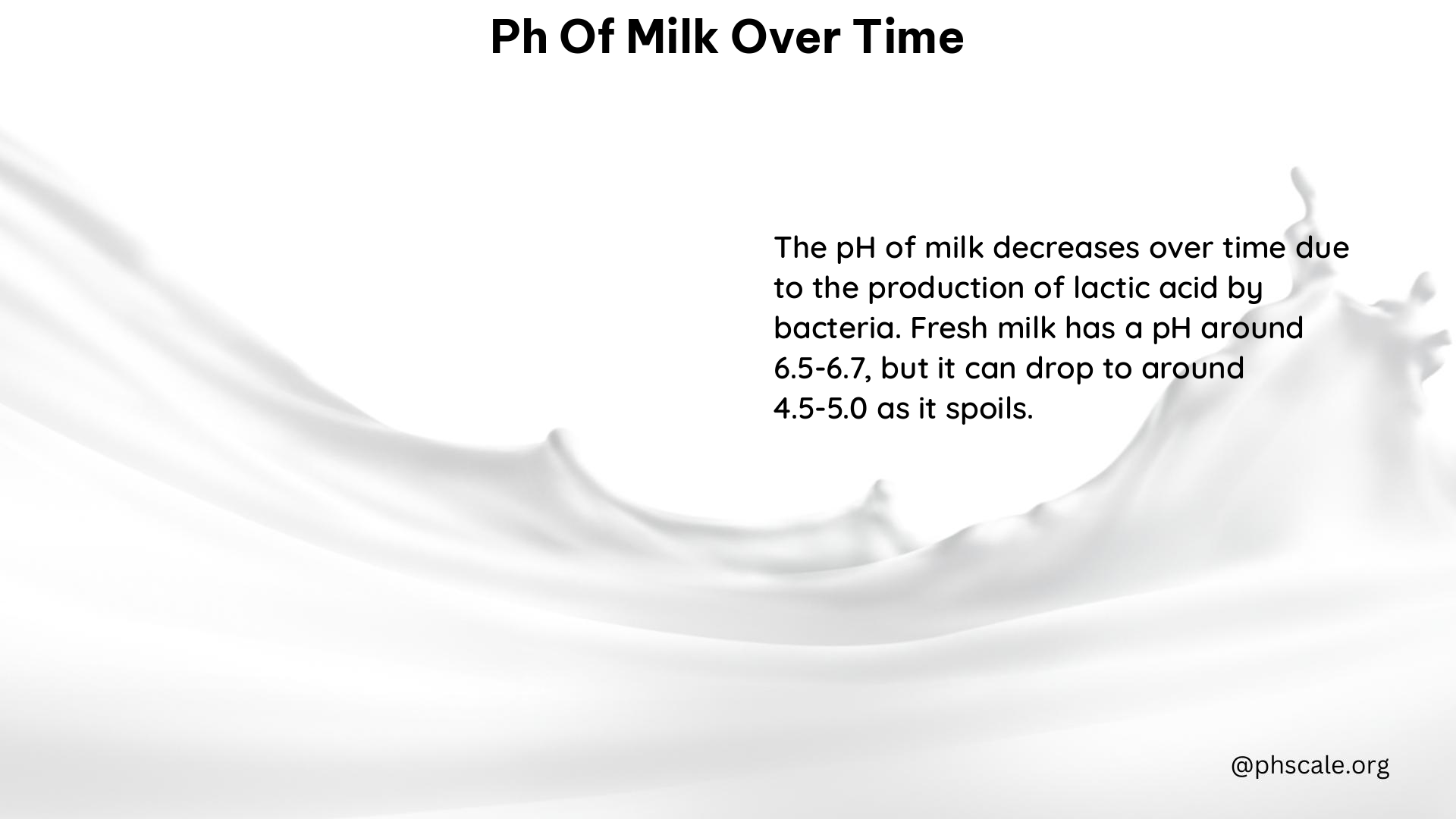The pH of milk is a crucial factor that affects its quality and safety for consumption. As milk ages, its pH can undergo significant changes, impacting its sensory properties and overall freshness. In this comprehensive blog post, we will explore the pH range of fresh milk, the changes in pH over time, the factors affecting these changes, and the importance of maintaining a balanced pH for safe consumption.
pH Range of Fresh Milk
Fresh milk from a cow typically has a pH range between 6.5 and 6.7. This pH range is considered optimal for the milk’s freshness and safety. In contrast, human milk has a slightly different pH profile, starting at around 7.45 for colostrum and gradually decreasing to 7.0-7.1 during the first three months of lactation, before increasing to 7.4 by 10 months.
Changes in pH Over Time

As milk spoils, its pH decreases. When the pH falls below 5, the protein in the milk congeals and precipitates, indicating that the milk has spoiled and is no longer safe for consumption. Heating milk can also affect its pH, causing a gradual decrease in the pH as the temperature increases.
Factors Affecting pH Changes
Bacterial growth is a significant factor in the pH changes of milk. As bacteria grow, they convert lactose into lactic acid, which increases the acidity of the milk and lowers its pH. Temperature also plays a crucial role, as higher temperatures accelerate bacterial growth and the resulting pH changes.
Sensory Changes and pH
Sensory changes in milk, such as a sour taste and smell, occur later in the spoilage process. These changes are more pronounced when milk is left at room temperature rather than refrigerated, as the pH drops more rapidly under warmer conditions.
Balancing pH and Safety
The pH of milk can indicate its safety for consumption. A pH below 5 indicates spoilage, while a pH above 6.7 suggests the milk is still fresh. Refrigeration helps maintain a stable pH and slows down bacterial growth, making milk safer for consumption.
Contaminants and Chemicals
Bacteria are the primary contaminants affecting the pH of milk. They convert lactose into lactic acid, leading to a decrease in pH. Lactic acid is a byproduct of bacterial growth and is responsible for the decrease in pH as milk spoils.
Home Remedies and Alternatives
Refrigerating milk at a temperature below 4°C (39°F) helps maintain a stable pH and slows down bacterial growth. Pasteurization and Ultra Heat Treatment (UHT) can also extend the shelf life of milk by reducing bacterial growth, resulting in a more stable pH over time.
Helpful pH Quantity to Consume
Milk with a pH between 6.5 and 6.7 is considered fresh and safe for consumption.
History
In the past, milk was often stored at room temperature, which led to faster spoilage and pH changes. The introduction of refrigeration and pasteurization has significantly improved milk safety and shelf life.
Data on Contaminants and Chemicals
The bacterial count in milk increases over time, leading to a decrease in pH. Fat-free milk tends to have a lower bacterial count than whole milk. The concentration of lactic acid also increases as milk spoils, contributing to the decrease in pH.
Solutions and Alternatives
Refrigeration, pasteurization, and UHT processing are effective ways to slow down bacterial growth and maintain a stable pH in milk, ensuring its freshness and safety for consumption.
References
- Investigation on Bacterial Growth and pH in Milk after the Expiration Date. (2023). https://www.ncbi.nlm.nih.gov/pmc/articles/PMC10622597/
- Changes in pH of Milk Samples after Heating at Different Temperatures for 30 Minutes. (n.d.). https://www.researchgate.net/figure/Changes-in-pH-of-milk-samples-after-heating-at-different-temperatures-for-30-min-in-the_fig1_309649033
- Relationship of Human Milk pH during the Course of Lactation. (1990). https://pubmed.ncbi.nlm.nih.gov/3748680/
- Measuring the pH of Milk Turning Sour. (n.d.). https://www.picotech.com/library/results/ph-of-milk
- What Is the Acidity or pH of Milk? (2022). https://www.thoughtco.com/what-is-the-ph-of-milk-603652
